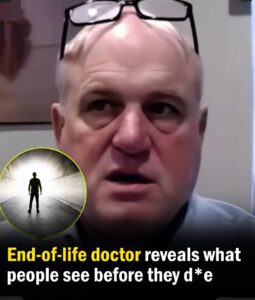What People Often Say and Experience in Their Final Days, According to a Hospice Doctor

Death is something most of us try not to think about. The unknowns and the fear surrounding it can feel overwhelming. But for people in hospice care—those facing the end due to terminal illness—confronting death is a part of daily life. Surprisingly, many hospice professionals say that rather than being bleak, working with the dying can be profoundly uplifting.
A Different View on Dying
Dr. Christopher Kerr, a palliative care physician with Hospice & Palliative Care Buffalo, has spent years researching end-of-life experiences. He describes the dying process as deeply reflective, often bringing clarity and emotional healing.
“Death gives people a unique perspective,” Kerr explains. “As the body fades, the mind often turns inward. People tend to reflect on their lives—what mattered most, their relationships, and the love they gave and received.”
Kerr and his team have studied over 1,500 end-of-life cases, documenting patients’ dreams and visions in their final days. These experiences, he says, often help patients find peace, reconnect with loved ones, and come to terms with past regrets.
Healing Through Final Dreams
Many patients report vivid dreams as death approaches—some comforting, others disturbing. But even the distressing ones can serve a purpose.
“There was a man in his 40s who had spent years in prison and battled addiction. He had terminal cancer and was usually lighthearted,” Kerr recalled on the Next Level Soul podcast. “Then one day, he broke down, describing dreams where he was being stabbed by people he had hurt in life.”
But the emotional pain brought transformation. After the dreams, he asked to see his daughter—someone he hadn’t spoken to in years—to apologize and express his love. Soon after, he passed away peacefully.

A Mother’s Guilt, A Parent’s Comfort
One woman carried heavy guilt over her children’s criminal troubles. As death neared, she had a dream where her own parents appeared, reassuring her she had been a good mother. That vision brought her the peace she’d struggled to find.
A Soldier’s Final Relief
One of Kerr’s patients, a World War II veteran who had stormed the beaches of Normandy, suffered from severe PTSD. Haunted by battlefield memories, he couldn’t sleep—let alone rest in peace.
Then, shortly before his death, he finally experienced restful sleep. When Kerr asked about his dreams, the veteran described reliving the day he was discharged from service. In the dream, a soldier approached him and said, “We’re coming to get you.” After that, he passed away quietly in his sleep.
Kerr calls this “post-traumatic growth”—a phenomenon where people find meaning and healing from their most painful memories, even in life’s final chapter.
When Children Face the End
Children, too, experience powerful visions before death—but with a touch of imagination and innocence. Lacking a full understanding of death, many envision comforting scenarios filled with animals, play, and safety.
One young girl described a magical castle of her own design: filled with her favorite things, a swimming pool, musical instruments, warm light, and friendly animals. When asked what it meant, she simply said, “It’s a safe place.”
Living Fully in the Final Moments
“Even when people are dying, they’re still very much alive,” Dr. Kerr emphasizes. “And during that time, they often do some of their most important emotional work.”
For those at the end of life, dreams and visions are more than just fleeting images—they are often the final steps in letting go, forgiving, reconnecting, and finding peace.